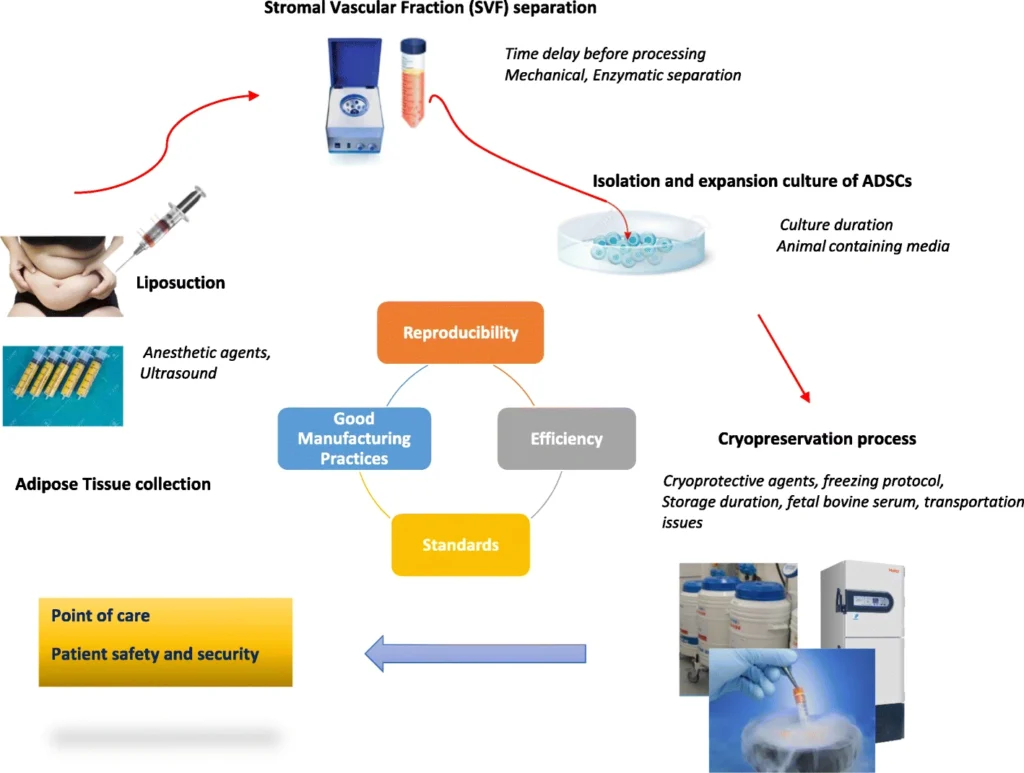Stem cells have long held the promise of revolutionizing medicine by offering the potential to repair damaged tissues and treat a range of debilitating diseases. A groundbreaking study led by researchers from UNSW Sydney has taken a significant step forward in harnessing the regenerative potential of stem cells, with a particular focus on those derived from human fat. These newly discovered “smart” stem cells exhibit an unprecedented ability to adapt to their environment and promote tissue healing, raising hopes for revolutionary advances in regenerative medicine.
Unlocking the Healing Potential: Introducing Smart Stem Cells
Stem cells possess the remarkable ability to differentiate into various types of specialized cells within the body, making them invaluable in the quest for regenerating damaged tissues. However, conventional stem cell therapies have been marred by challenges such as immune rejection, ethical considerations, and limited availability. The recent study from UNSW Sydney introduces an innovative solution to these obstacles by tapping into a new source of stem cells: human fat.
The Reprogramming Technique: Transforming Fat Cells into Healing Agents
The research team behind this breakthrough extracted fat cells from human donors and employed a cutting-edge technique known as cell reprogramming. Through this process, ordinary fat cells were transformed into “smart” stem cells, heralding a new era in regenerative medicine. These smart stem cells were then introduced into mice with diverse forms of tissue damage, including heart attack, skin wounds, and brain injuries.
The Extraordinary Healing Abilities of Smart Stem Cells
The results of the study were nothing short of remarkable. The smart stem cells exhibited a unique ability to not only survive within the host tissue but also respond dynamically to their surroundings. Upon integration, these cells activated specific genes essential for the healing process. For instance:
- In heart tissue, the smart stem cells triggered the activation of genes associated with blood vessel formation and cardiac function, offering potential therapies for heart-related conditions.
- In skin wounds, the cells initiated genes related to inflammation and wound healing, indicating their capacity to expedite the recovery process.
- In the brain, smart stem cells activated genes linked to neural protection and regeneration, hinting at their potential to treat neurological injuries and disorders.
The Road Ahead: Promising Prospects for Regenerative Medicine
The implications of this breakthrough are far-reaching. The ease of obtaining smart stem cells, their compatibility with the patient’s body, and their multifunctional capabilities make them an enticing candidate for regenerative medicine applications. Furthermore, the researchers envision the creation of organoids – miniature replicas of human organs – using these versatile cells. Organoids could revolutionize disease research and drug testing by providing a more realistic and ethical platform for experimentation.
The study conducted by UNSW Sydney researchers represents a significant leap forward in the field of regenerative medicine. By harnessing the potential of smart stem cells derived from human fat, the scientific community is one step closer to unlocking the true healing power of these cells. With the ability to adapt to different environments and stimulate essential genes for tissue repair, smart stem cells hold the promise of transforming the treatment landscape for various medical conditions. As this exciting research continues to evolve, the future of regenerative medicine appears brighter than ever before.

Disclaimer: The information provided in this article is based on the research conducted by UNSW Sydney and is intended for informational purposes only. Consult a medical professional for personalized medical advice and treatment.
Resources:
2.https://phys.org/news/2021-01-scientists-closer-smart-stem-cells.html